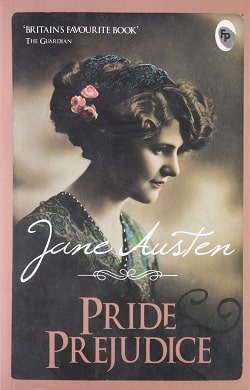Summary

Pride and Prejudice
by Jane Austen
Alternate cover edition of ISBN 9780679783268
Since its immediate success in 1813, Pride and Prejudice has remained one of the most popular novels in the English language. Jane Austen called this brilliant work "her own darling child" and its vivacious heroine, Elizabeth Bennet, "as delightful a creature as ever appeared in print." The romantic clash between the opinionated Elizabeth and her proud beau, Mr. Darcy, is a splendid performance of civilized sparring. And Jane Austen's radiant wit sparkles as her characters dance a delicate quadrille of flirtation and intrigue, making this book the most superb comedy of manners of Regency England.
.
Read
Pride and Prejudice on http://kissnovel.net
Martial Peak Reviews
Jane Austen's Pride and Prejudice is a timeless classic that continues to captivate readers with its intricate exploration of themes such as love, class, and social reputation. Published in 1813, this novel has not only stood the test of time but has also become a cornerstone of English literature, celebrated for its wit, humor, and keen social commentary.
At the heart of Pride and Prejudice is the dynamic and evolving relationship between Elizabeth Bennet and Mr. Darcy. Elizabeth, the novel's protagonist, is a spirited and intelligent young woman who challenges the societal norms of Regency England. Her wit and independence make her a compelling character, and her journey of self-discovery and personal growth is central to the novel's enduring appeal. Elizabeth's character is a refreshing departure from the typical female protagonists of her time, and her ability to stand her ground against the formidable Mr. Darcy is both admirable and inspiring.
Mr. Darcy, on the other hand, is initially portrayed as proud and aloof, a man of considerable wealth and status who seems to look down upon those of lower social standing. However, as the story unfolds, readers are treated to a deeper understanding of his character. Darcy's transformation from a seemingly arrogant aristocrat to a man capable of deep love and humility is one of the novel's most compelling arcs. This evolution is masterfully crafted by Austen, who uses Darcy's character to explore themes of pride, prejudice, and the possibility of change.
The interplay between Elizabeth and Darcy is a splendid performance of civilized sparring, as described in the book's blurb. Their initial misunderstandings and prejudices give way to a deeper understanding and mutual respect, illustrating Austen's belief in the power of love to overcome societal barriers. The romantic tension between them is palpable, and their eventual union is both satisfying and believable, a testament to Austen's skill in character development and storytelling.
Beyond the central romance, Pride and Prejudice is a rich tapestry of secondary characters and subplots that add depth and complexity to the narrative. The Bennet family, with its diverse array of personalities, provides a microcosm of Regency society. Mr. Bennet's dry wit and Mrs. Bennet's social ambitions offer comic relief, while the relationships between the Bennet sisters highlight the varying roles and expectations of women during this period.
Austen's portrayal of the social hierarchy and the importance of marriage in securing one's future is both critical and insightful. Through characters like Mr. Collins and Lady Catherine de Bourgh, Austen satirizes the absurdities of class distinctions and the often transactional nature of marriage. This critique is delivered with Austen's characteristic wit and irony, making the novel not only a romantic comedy but also a sharp social commentary.
The themes of pride and prejudice are woven throughout the narrative, influencing the characters' actions and perceptions. Elizabeth's initial prejudice against Darcy and his prideful demeanor are obstacles they must overcome to find happiness. Austen deftly illustrates how these flaws are not insurmountable but rather opportunities for growth and understanding. The novel suggests that true love requires humility, empathy, and the willingness to see beyond first impressions.
In comparison to other works of the same era, Pride and Prejudice stands out for its focus on the inner lives of its characters and its exploration of personal growth. While contemporaries like the Brontë sisters also delved into themes of love and social class, Austen's work is distinguished by its lightness of touch and its emphasis on wit and humor. Her ability to balance romance with social critique has influenced countless authors and remains a benchmark for the genre.
The novel's impact extends beyond literature, inspiring numerous adaptations in film, television, and theater. Each adaptation brings its own interpretation to the story, yet the core themes and characters remain as compelling as ever. This adaptability speaks to the universality of Austen's insights into human nature and the enduring relevance of her work.
In conclusion, Pride and Prejudice is a masterful exploration of love, class, and personal growth. Jane Austen's sharp wit, memorable characters, and insightful social commentary make this novel a must-read for anyone interested in the complexities of human relationships and the societal norms that shape them. Whether you are revisiting this classic or discovering it for the first time, Pride and Prejudice offers a delightful and thought-provoking reading experience that continues to resonate with audiences today.
























Reviews 0
Post a Reviews: